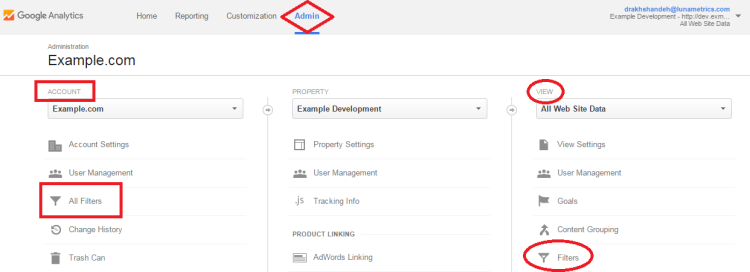The Best Guide To In Which Order Does Google Analytics Filter Data
Wiki Article
The Only Guide for In Which Order Does Google Analytics Filter Data
Table of ContentsSome Known Incorrect Statements About In Which Order Does Google Analytics Filter Data In Which Order Does Google Analytics Filter Data - Truths10 Easy Facts About In Which Order Does Google Analytics Filter Data ShownIn Which Order Does Google Analytics Filter Data Can Be Fun For AnyoneSome Of In Which Order Does Google Analytics Filter DataThings about In Which Order Does Google Analytics Filter Data
io" is the internet site as well as if I go to the homepage and click a few other web pages like signup page, it shows me in the real-time report popping-up as exactly how we established in the filters. This web page is the of web site as well as you can see the sub-domain highlighted as.
Similar to the previous process, we have to develop a brand-new filter as discussed in the last steps - In Which Order Does Google Analytics Filter Data. in this brand-new filter, I'm calling it as and also I'm picking After that I'm keying the filter pattern as In this filter pattern, the pipe symbol () is included to attach any type of various other hostname that you wish to consist of in addition to the various other hostnames
The Definitive Guide for In Which Order Does Google Analytics Filter Data
This is just how you can go inspect your web site as well as comeback sight in real-time reports. The real-time report now shows the modifications that you made when producing that filter. In this instance, the Fractured page explains concerning URL of the page i. e when the Web page URL being repeated the exact same, omitting slash or any kind of minute aspects.Now develop a new filter as well as I call it as. Select and also pick the filter areas.

In Which Order Does Google Analytics Filter Data for Beginners
The adhering to guidelines will stroll you via the process: Produce a new Google Spread sheet (or open up an existing one). From the menu bar pick: Add-ons > Get Add-ons Find the Google Analytics Add-on from the attachments gallery and also select it. From the add-on description page, click the "+" in the top right corner to include this add-on to your spread sheet.Records can be produced manually or with the aid of the add-on's report production tool. To make use of the device, pick "Attachments" > "Google Analytics" > "Develop a New Record" from the food selection Find Out More bar.
This is willful. In Which Order Does Google Analytics Filter Data. The device is indicated to aid obtain you started and give you with the details you may not understand off the top of your head. The remainder of the fields will require to be gotten in by you. If you have any type of concerns about what to put in each area, see the referral at the end of this page.
The 30-Second Trick For In Which Order Does Google Analytics Filter Data
It can be a sheet in the spreadsheet you're presently in, or a different spreadsheet entirely (as long as you have modify access to that her explanation spread sheet). To my latest blog post print the results to a various spreadsheet duplicate the spread sheet URL as well as paste it right into the cell to the right of the "spreadsheet-url" specification.This opens up a record scheduling dialog where you can turn organizing on and also off, as well as establish just how frequently your record will certainly run. To turn scheduling on, examine package labelled "Enable records to run instantly." Once organizing is allowed you can use the choose dropdown to manage the moment and frequency.
When organizing records, see to it there is a lot of time between when you produce the timetable and also when the routine is intended to run. If it's also close to the initial incident of the scheduled time, there's a chance those records will be held off until the next incident. It's normally best to leave at the very least a one-hour barrier.
Not known Facts About In Which Order Does Google Analytics Filter Data
Hidden parameters are advanced alternatives that are not required for many reports and also are concealed by default. You can utilize these parameters by un-hiding the rows 14-16 in the Record Arrangement sheet. Name Description This is the record name. It will likewise be the name of the sheet where the record information is written.The adhering to expression returns the last day of the previous month: =EOMONTH(TODAY(), -1) The end day for fetching Analytics data. Demands can specify an end date formatted as YYYY-MM-DD, or as a relative date (e. g., today, the other day, or Ndays, Ago where N is a positive integer). You can also use Sheets date functions to specify this worth programmatically.
Metrics can be defined in one of two formats: For example, all of the adhering to are legitimate worths for the Metrics criterion - In Which Order Does Google Analytics Filter Data. For most use situations, a checklist of metric IDs is the simplest way to specify the Metrics criterion.
5 Easy Facts About In Which Order Does Google Analytics Filter Data Described
Name Description A list of dimensions to inquire. Dimensions can be specified in one of two styles: For example, all of the following are valid values for the Metrics parameter. For many use instances, a checklist of dimension IDs is the most convenient way to define the Capacities criterion.
Report this wiki page